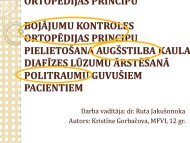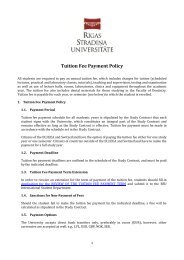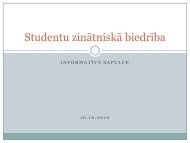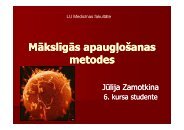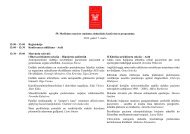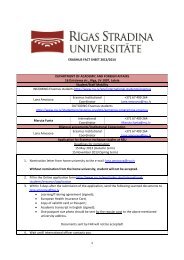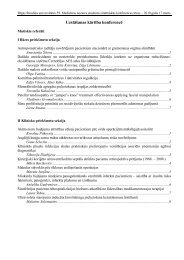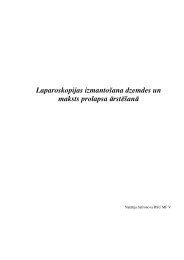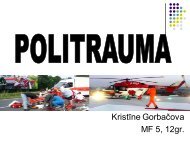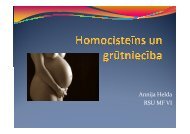History of Latvia: a Brief Survey
History of Latvia: a Brief Survey
History of Latvia: a Brief Survey
- No tags were found...
You also want an ePaper? Increase the reach of your titles
YUMPU automatically turns print PDFs into web optimized ePapers that Google loves.
On 23 August 1989, fifty years had passed since the signing <strong>of</strong> the ‘Molotov-Ribbentrop Pact’.In order to call the world’s attention to the fate <strong>of</strong> the Baltic countries, on this day the People’sFronts <strong>of</strong> all three Baltic countries held a grandiose political demonstration —‘The Baltic Way’.The Baltic people made a 600-km-long human chain from Tallinn through Rīga to Vilnius. Thiswas a symbolic demonstration <strong>of</strong> the Baltic peoples’ united will for independence.‘The Baltic Way’ — a human chainthat demonstrated the unity <strong>of</strong> theBaltic nations in their aspirations forindependence. <strong>Latvia</strong>, 23 August 1989.<strong>Latvia</strong>n parliamentarians following thedecision to reinstate independence, 4May 1990.An article announcing the renewal <strong>of</strong>independence was published on thefront page <strong>of</strong> the <strong>Latvia</strong>n newspaperLatvijas Jaunatne, 5 May1990.44New elections <strong>of</strong> the <strong>Latvia</strong>n Supreme Soviet took place on 18 March 1990, in which thesupporters <strong>of</strong> independence gained victory. On 4 May 1990, the new Supreme Soviet <strong>of</strong>the LSSR adopted a Declaration <strong>of</strong> Independence, which called for the renewal <strong>of</strong> pre-war<strong>Latvia</strong> and its 1922 Constitution. Moscow and USSR military circles could not come to termswith the plans to reinstate <strong>Latvia</strong>’s independence. In January 1991 pro-Moscow and procommunistpolitical forces launched an attack. With the use <strong>of</strong> brutal force, attempts weremade to overthrow the lawfully elected government. The implementation <strong>of</strong> Moscow’sgoals was thwarted by the <strong>Latvia</strong>n people’s non-violent, organised resistance, which enteredhistory as the ‘Days <strong>of</strong> the Barricades’. On 19 August 1991, an unsuccessful attempt at acoup d’etat took place in Moscow when a small group <strong>of</strong> leading Soviet functionaries triedto usurp power. This event resulted in <strong>Latvia</strong>’s moving toward independence at an evenmore accelerated pace. On 21 August 1991, the Supreme Soviet <strong>of</strong> the <strong>Latvia</strong>n Republicannounced that the transition period to full independence that was declared on 4 May 1990had come to an end. Thus, <strong>Latvia</strong> proclaimed itself a fully independent nation — a nationwhose judicial foundation harked back to thestatehood that existed before the occupationon 17 June 1940. <strong>Latvia</strong>, alongside the otherBaltic States, demonstrated to the world thatthe renewal <strong>of</strong> independence <strong>of</strong> a country canbe achieved in a peaceful manner, withoutwar and bloodshed. Thus the whole process <strong>of</strong>renewing independence since the late 1980s isknown as the ‘Singing Revolution’.



